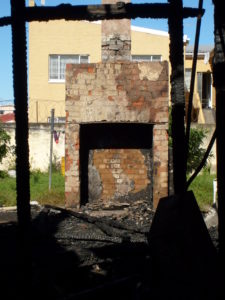 Hello August! The final days of summer are upon us and many busy homeowners are quickly preparing for cooler weather. This is quite a busy time here in the chimney sweep business, especially in an area as inherently busy as Philadelphia. Today I wanted to take a few minutes to explain how creosote forms in your chimney and how you can prevent creosote buildup.
Hello August! The final days of summer are upon us and many busy homeowners are quickly preparing for cooler weather. This is quite a busy time here in the chimney sweep business, especially in an area as inherently busy as Philadelphia. Today I wanted to take a few minutes to explain how creosote forms in your chimney and how you can prevent creosote buildup.
What is Creosote?
Okay, this is a commonly asked question because most homeowners see a black buildup in their chimney and assume it’s just soot. No big deal, right? How do you know whether it’s soot or creosote? One is much more dangerous than the other, so let’s talk about that one – creosote.
Burning wood releases pollutants in the form of gasses and particulate matter. This is a simple fact of life when you choose to use a wood burning stove or a fireplace. You can’t avoid it, but you can take precautions to protect your home from a chimney fire due to creosote buildup.
Creosote forms as a result of several factors. Gasses and particulates that leave burning wood in the form of smoke should effortlessly travel up your chimney and leave. That simple task doesn’t always occur. Smoke that is cooled below 250 degrees Fahrenheit liquefies and causes the gases and particulates to stick together. They become a solid and stick to the chimney lining on their way out. This buildup is what we refer to as creosote.
So in a nutshell, creosote is unused fuel that sticks to the lining of your chimney. This unused fuel is highly combustible and proof that your fireplace, wood burning stove, and chimney aren’t working efficiently.
Prevent Creosote
There is actually no “standard” in which you can avoid creosote entirely. You would have to continually burn the perfect wood at precisely the right temperature, which is, unfortunately, impossible. You can, however, reduce the amount of buildup by following several relatively simple steps.
- Don’t burn wet wood. Always choose well-seasoned, dry wood. I’ve written a few other blog posts on the best types of wood to use in your wood burning stove if you’d like to see a few examples.
- Don’t starve your fire of air. A slow burn is nice, but it creates the perfect atmosphere for creosote formation. The temperature of your chimney needs to be at least 250 degrees Fahrenheit to the top to prevent condensation.
- Request an inspection by a certified chimney sweep to ensure proper size and placement of the chimney, liner, flue, and the overall efficiency of your heating system.
- Schedule a chimney cleaning at least once per year to prevent buildup from sneaking up on you from year to year.
Creosote Cleanup
Cleanup isn’t an easy or clean job. Most homeowners don’t have the proper equipment for the job. You can often rent chimney cleaning equipment, but without proper training, you may create a larger mess than you clean. Give me a call if you’re looking for a chimney inspection or a chimney sweep in the Philadelphia area. I’ll visit, give you a quote, and schedule a cleaning if we each agree on the terms. I look forward to hearing from you!
